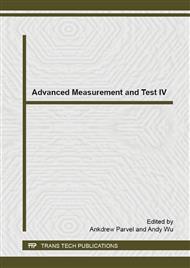p.69
p.75
p.80
p.84
p.90
p.97
p.104
p.111
p.121
GFRP Bar: Determining Tensile Strength with Bending Test
Abstract:
In order to obtain GFRP reinforcement bars it is necessary to undertake tests regulated code which require important mechanical tools. This paper presents a method which allows for determining GFRP rebars tensile strength value from their flexural strength value which has been obtained with a simple, inexpensive and reliable test. This method results will be verified by applying it to values obtained in a series of bending tests and comparing these results with values obtained in tensile tests. Values concordance for small diameter GFRP rebars is very good.
Info:
Periodical:
Pages:
90-96
Citation:
Online since:
January 2015
Authors:
Price:
Сopyright:
© 2015 Trans Tech Publications Ltd. All Rights Reserved
Share:
Citation:


